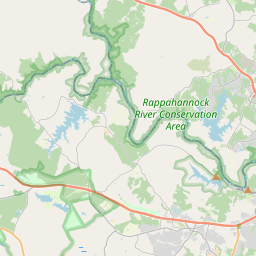Civilian Conservation Corps Company 2363
Historical marker location:






- March 31, 1933: President Franklin D. Roosevelt signs the Emergency Conservation Work (ECW) Act into law, establishing the Civilian Conservation Corps as part of his New Deal program.
- April 5, 1933: The CCC is officially launched, providing employment opportunities for unemployed young men between the ages of 18 and 25.
- 1933-1942: The CCC enrolls over 2.5 million young men from economically disadvantaged families, providing them with jobs, vocational training, and relief during the Great Depression.
Camp Life: CCC enrollees live in camps located in rural areas and work on various conservation projects across the United States. They receive food, shelter, clothing, and a small wage, with a portion of their earnings sent back home to support their families.
Conservation Projects: The CCC undertakes a wide range of conservation projects, including reforestation, erosion control, trail construction, forest fire prevention, wildlife conservation, historic site restoration, and the development of public parks.
Collaboration with Other Agencies: The CCC works in collaboration with various federal agencies, including the National Park Service, U.S. Forest Service, Bureau of Land Management, and Soil Conservation Service, to implement conservation programs and projects.
Educational and Vocational Training: In addition to their work, CCC enrollees receive educational and vocational training, such as literacy classes, courses in conservation and forestry, and technical skills development.
Military Training: During World War II, the CCC shifts its focus to providing military training for its enrollees, preparing them for military service.
- July 1, 1942: As the United States transitions into wartime efforts and the economy improves, the CCC gradually loses its significance. The program officially ends with the termination of new enrollments.
The Civilian Conservation Corps played a significant role during the Great Depression, providing employment, relief, and skills training to young men while accomplishing vital conservation work across the country. The program's legacy can still be seen today in the numerous parks, forests, and other public lands that were developed or improved through the efforts of CCC enrollees.
Jamestown, Virginia, was the first permanent English settlement in the Americas. It was founded in 1607 and served as the capital of Virginia until 1699.
During the Revolutionary War, Stafford County played a vital role in providing troops and supplies to the Continental Army. Local militias were formed, and several key figures emerged, including George Washington, who spent time in Stafford and owned a plantation there called Ferry Farm. The county also witnessed the Battle of Aquia Creek, where American forces defended against British incursions.
In the mid-19th century, Stafford County experienced considerable growth and development. The construction of the Richmond, Fredericksburg, and Potomac Railroad in the 1830s brought increased transportation options, boosting trade and allowing farmers to easily transport their goods to market. The county saw the rise of numerous industries, including millworks, ironworks, and quarries, which further spurred economic prosperity.
Stafford County also played a significant role during the American Civil War. It lay on the path of several major military campaigns, including the Battle of Fredericksburg in 1862. The county witnessed the devastating impact of war, with many battles fought on its soil and numerous casualties suffered. Today, Stafford County is a growing suburban community with a diverse population and a mix of historic landmarks, cultural sites, and natural beauty, making it an attractive place to live and visit.
Stafford County Timeline
This timeline provides a concise overview of the key events in the history of Stafford County, Virginia.
- 1608: Captain John Smith explores the region that would become Stafford County.
- 1664: Stafford County is formed from Westmoreland County.
- 1673: The county seat is established at Stafford Court House.
- 1704: St. Paul's Church is built, becoming one of the oldest churches in the United States.
- 1732: George Washington is born at his family's plantation in Stafford County.
- 1862: The Battle of Aquia Creek takes place during the American Civil War.
- 1937: Government Island, a source of Aquia sandstone used in many historic buildings, becomes a national monument.
- 1996: Stafford Regional Airport opens to the public.